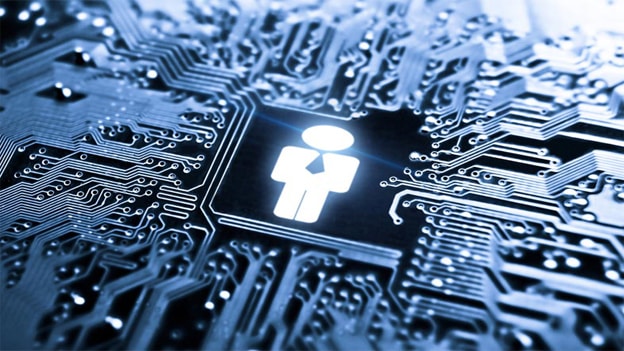2018 - The reckoning of the new-age HR

With 2018 just round the corner, it’s time for both reflection and forward-thinking. The world of work is undergoing unprecedented changes under the influence of digitalization, democratization of thought and innovation, demographic and social shifts. This offers HR professionals opportunities to redefine and reconfigure all the elements that constitute the workspace and work relationships. It is really the opportunity to reflect, recalibrate and redefine our HR practices to bring about the new age HR ready for 2020 and beyond.
It’s time for a workforce ‘upgrade’
The radical shift from full-time employees to an augmented workforce (augmented by digitalization and technology) flips the traditional concepts of jobs, how employees are hired and trained, and what type of work can be done by people and machines. The Deloitte 2017 Human Capital Trends report identifies 10 trends for attention, of which one is the augmented workforce, a shift toward artificial intelligence, robotics, and the open talent economy. Driven by technology, the future workplace and work is likely to change radically over the next couple of years. Most of the existing white collar jobs will be destroyed because of automation brought about by digitization and artificial intelligence and yet new jobs will be created because technology will release people to do other things, which will create expansion opportunities for businesses.
Simultaneously, HR professionals will have to learn to hire and develop people differently as organization sizes will shrink, skill requirements will change frequently and the latest expertise will have to be outsourced continuously.
So the question now is not whether to augment, but rather how, with what and how much. These questions are propelled not only by the variety of digital devices on offer but also by an increasing use of artificial intelligence, which is augmenting human judgment. When AI enabled robotic workforce makes its way into offices, there will be a huge challenge for the HR to achieve the right balance between automation and human capital to achieve optimal outcome. Whilst robots can help humans to automate routine tasks, the creative/unpredictable tasks that involve creative problem solving, innovation, design and ambiguity will require new skills and what could be termed as the competencies of the future — termed as ‘D.I.C.E’ (Design Thinking, Innovation, Creativity led Entrepreneurship). At YES BANK, D.I.C.E implies how employees think, innovate and execute.
Keep it agile, flat & open
Employees, especially the millennials, want to be a part of an agile organization. This is because such an organization responds quickly to the changes in the marketplace or environment. These changes may be because of new technological advancements or emergence of new competitors, but an agile organization finds ways to adapt to these changes in no time to have a competitive advantage. An agile model requires an agile ‘mindset’, to build trust, get different technical functions and professional communities (marketing, customer service, etc.) to work together in a truly integrated manner, and join forces as a real team until a project is launched, and even throughout the project life cycle. A truly agile organization empowers future leaders by giving them real decision making authority, develops them and redefines processes to enable speed of execution.
Upping the HR digital quotient
HR would need to ‘Go Digital’ to re-invent the employee interface (EI) and employee experience (EX), benchmarking with popular Apps. HR processes need to be given a complete digital makeover to reap benefits of enhanced TAT, service quality and dramatic reduction in HR operating costs through automation and use of robotics and analytics to support people decisions. It is now witnessing the era of true digital disruption, transforming the way HR delivers solutions to its employees.
Even with rapid development in technology that ensures collection and analysis of large volumes of data, organizations globally are making sluggish progress in leveraging analytics to influence human capital decisions. Translating data into predictive insights is still rare and only few are generating basic descriptive reporting and historical trend analyses. Enhancing the employee experience is much more than choosing which digital technology to implement. Any digital initiative, be it social, mobile or cloud technology, will only be useful if employees adopt them seamlessly. Therefore, HR must begin with considering the employee needs and user experience. Incorporating design thinking throughout the process will help companies maximize the impact of new digital technologies.
Work and personal life are now seamless through the use of mobile devices that also present a great opportunity for organizations to drive adoption of mobile-friendly HR technologies, never seen before with traditional HR platforms.
Working towards an inspired workforce
An overarching theme of inspired workforce is witnessed by how business heads, HR professionals and employees are viewing work, both today and in the future. Building a highly inspired and engaged workforce that is fully aligned to the organizational goals and creating a work environment in which people are empowered; productive, contributing, and happy is the real challenge. A productive and positive experience is now the new contract between the employer and the employee.
Inspiration in the workforce comes from demonstrating that the organization values people, keeping information open and transparent and by offering more ‘impact opportunities’ rather than just delegating work. The tip is to emulate the organization’s best customer experience to create a superior employee experience, simply by being connected and aware of their milestones and the physical environment they operate in, enabling them with tools and technology to enhance their productivity and offering learning opportunities to achieve their best at work.
Managing the Generation Gap
The generation between 20 and 35 years of age, known as the “millennials”, will represent half of the workforce by 2020 and three quarters by 2025. While some expectations are common to all segments — predictable rewards, need for meaningful work, growth opportunities, dignity and respect; the gap is evident in other expectations like factors of engagement, motivation and recognition, work life balance, and the concept of career path or development.
This gap in the mindset of millennials needs to be taken into consideration, into the HR strategy for 2018 and ingrained in the older generations so as to foster collaboration at the workplace. Contrary to popular perception, millennials place little importance on a company encouraging creativity or being a fun, informal place to work, according to Harvard Business Review. The younger workforce is more entrepreneurial, values a solid work-life balance and seeks flexible working structures.
In 2018, and in many more years to come, to bring significant value to business, HR must be the catalyst and an ‘accelerator’ to enable the execution of strategy through building organizational capacity and capability. This interestingly is a role that cannot be automated, shared as a service, off-shored or outsourced. It comes from an in-depth knowledge of a business’s strategy and the existing capabilities of the organization.
The advantage that HR has here is that, ultimately, any strategy is executed by people — who need to be supported, trained and enabled to fulfill the larger vision.
The key questions that we must continuously seek answers for are — how can core HR processes like hiring, succession planning, and performance management be made more efficient and effective? How can HR become a valuable business partner, central to strategy discussions? How can we bring about the new age HR that empowers, engages and evolves? Let’s make that our agenda for 2018.
The question now is not whether to augment, but rather how, with what and how much?











